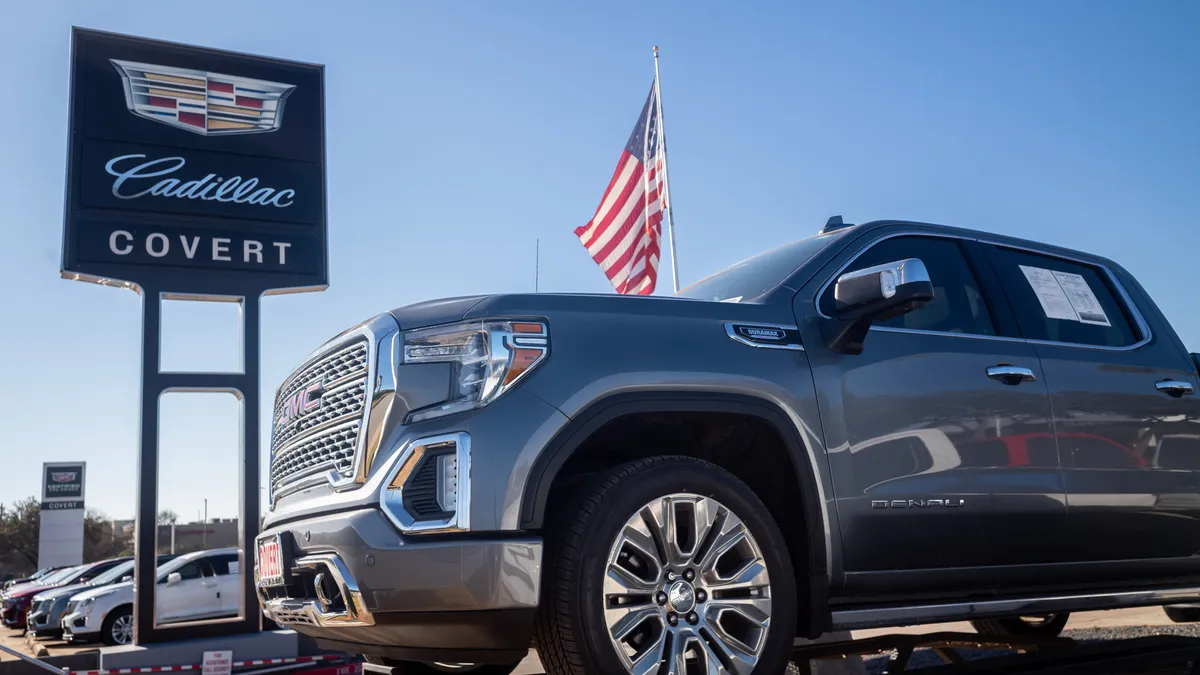Dive Brief:
- New vehicle inventories are at their highest levels since spring 2021, despite the United Auto Workers strike against General Motors, Ford Motor Co. and Stellantis, according to an October report from Cox Automotive.
- Total inventories of unsold new vehicles in the U.S. were 2.21 million units as of Oct. 2, a 60% year-over-year increase. But the supply of unsold new cars and trucks remains 35% below pre-pandemic levels.
- GM has a 60-day supply of new vehicles, making it the Big Three automaker most vulnerable to the UAW strike. Ford and Stellantis have 90- and 111-day supplies, respectively. The industry average was 60 days, which many automakers consider ideal.
Dive Insight:
The new vehicle supply levels in the U.S. are based on the daily sales rate for the most recent 30-day period ending on Oct. 2. U.S. light-duty vehicle sales in September rose an estimated 20% year over year, while Q3 sales increased an estimated 17% compared with 2022. The average listing price of new vehicles was $47,397, a 3% YoY increase.
“Inventory levels remain relatively stable, and, with the exception of some GM models, Detroit automakers have ample inventory for now to keep them operating through the coming month,” Charlie Chesbrough, senior economist at Cox Automotive, said in a statement.
GM’s Chevrolet and Cadillac brands had the lowest inventory levels among domestic brands, with Chevrolet maintaining a 57-day supply and Cadillac keeping a 46-day supply. Those brands sell some of GM’s most profitable vehicles, including full-size SUVs like the Chevrolet Tahoe and Suburban and Cadillac Escalade. Those vehicles had less than 30 days of supply. In addition, the Chevrolet Colorado and GMC Canyon pickups had only 29 days of supply, as the UAW strike targeted the Missouri plant where GM assembles both vehicles.
Last week, the UAW threatened to strike GM’s Arlington Assembly plant in Texas, which builds the automaker’s full-size SUVs. The union relented after GM agreed to cover electric vehicle battery plants under the UAW’s national master agreement.
On Oct. 3, GM said its U.S. dealers delivered 674,336 vehicles in Q3, a 21% YoY increase. GM’s sales are up 19% year-to-date due to strong demand for its trucks and SUVs.
Meanwhile, Ford’s popular F-150 pickup had 97 days of supply at the start of October, while the Ford Explorer SUV had the highest inventory of the top 30 selling models, with a 119-day supply.
Still, an extended UAW strike could affect automakers besides GM.
“Some brands have inventory buildup, so production disruptions will take time to feed through the distribution network. However, the strike could start to have an impact in the coming weeks if it continues,” Chesbrough said in a statement.













